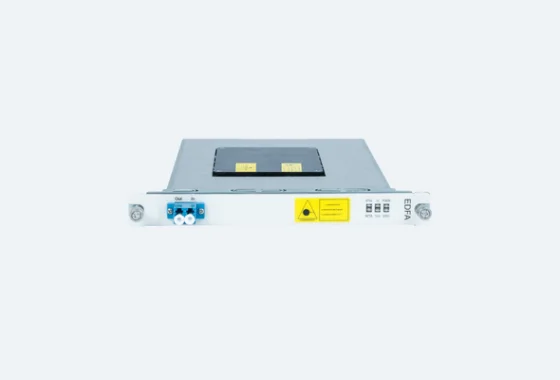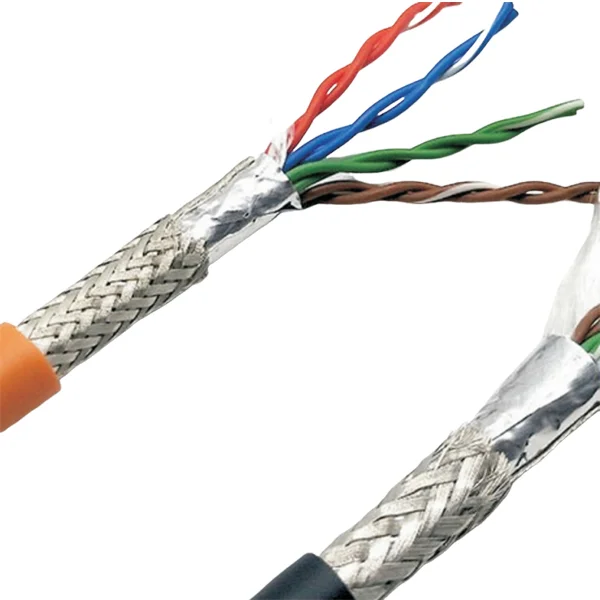In today's data-driven world, the need for efficient and high-capacity data transmission has never been more pressing. Data centers, which serve as the backbone of the internet and cloud computing infrastructure, require robust technologies to ensure seamless communication, minimal latency, and high throughput. Dense Wavelength Division Multiplexing (DWDM) combined with Erbium-Doped Fiber Amplifiers (EDFA) has emerged as a vital solution to meet these demands. The integration of EDFA DWDM in data center networks has significantly enhanced data transmission capacities, enabling faster, more reliable, and scalable communication systems. This article WDMLight delves into the crucial role of EDFA DWDM in the data center industry.

The Growing Need for High-Capacity Data Transmission in Data Centers
Data centers are the lifeblood of modern communication and digital services. With the growing reliance on cloud computing, big data analytics, artificial intelligence (AI), and Internet of Things (IoT) applications, the demand for faster and more efficient data transmission continues to rise. A large-scale data center typically handles vast amounts of data across numerous servers, networks, and storage systems, which must all communicate effectively with one another to ensure optimal performance.
However, one of the key challenges faced by data centers is the transmission of data over long distances with minimal signal degradation. Optical fiber networks, which provide the high bandwidth necessary for data transfer, are subject to attenuation over long distances. To address this issue and maintain high-speed data flow, amplification is required to preserve signal integrity, especially as data center networks expand and grow more complex.
This is where EDFA DWDM plays a crucial role. By amplifying optical signals without converting them into electrical form, EDFA DWDM enables the efficient transmission of multiple data streams over long distances, while ensuring the integrity of each data signal.
EDFA DWDM in Data Center Networks
To fully appreciate the impact of EDFA DWDM in data centers, it's essential to understand the technologies that drive them: DWDM and EDFA.
DWDM (Dense Wavelength Division Multiplexing)
DWDM is an advanced multiplexing technique used in optical communication to maximize the capacity of fiber-optic networks. By transmitting multiple optical signals at different wavelengths (or channels) over a single optical fiber, DWDM increases the overall data transmission capacity. Each channel in a DWDM system is capable of carrying a separate data stream, allowing service providers to significantly increase the bandwidth of their networks without the need for additional fiber infrastructure.
In a data center, DWDM technology enables multiple 10G, 40G, or even 100G data streams to be carried simultaneously on the same optical fiber, reducing the need for additional cabling and improving the overall cost-effectiveness of the network. DWDM also supports high-speed transmission over long distances, which is vital for data centers that need to connect geographically dispersed locations.
EDFA (Erbium-Doped Fiber Amplifier)
EDFA is an optical amplifier used to amplify light signals in fiber-optic communication systems. It is based on a fiber doped with erbium, a rare-earth element. When the erbium-doped fiber is excited by an external pump light source, the erbium ions in the fiber release energy that amplifies the incoming optical signals at the desired wavelengths.
One of the major advantages of EDFA is its ability to amplify signals directly in the optical domain, without needing to convert them to electrical signals and back again. This results in a more efficient amplification process, as there is less signal distortion and fewer delays associated with the conversion process. Additionally, EDFAs are highly effective for amplifying the multiple wavelengths used in DWDM systems, making them ideal for high-capacity networks, such as those found in data centers.
EDFA DWDM Amplifier: A Powerful Combination
The EDFA DWDM amplifier combines the capabilities of both EDFA and DWDM technologies to provide a highly effective solution for data center networks. These amplifiers are capable of simultaneously amplifying multiple channels of data at different wavelengths, ensuring that the signals remain strong and clear over long distances. The integration of EDFA into DWDM systems eliminates the need for frequent regeneration or retransmission of data, which helps maintain high transmission efficiency and reduces network congestion.
How EDFA DWDM Enhances Data Center Performance
Data centers often rely on complex optical fiber networks that interconnect servers, storage systems, and other critical infrastructure. The role of EDFA DWDM in these networks is vital for ensuring fast, high-quality, and scalable data transmission. Here are several ways in which EDFA DWDM enhances data center performance:
1. Extending Transmission Range
One of the primary benefits of EDFA DWDM in data centers is their ability to extend the range of optical signals. In traditional fiber-optic networks, signal loss is inevitable due to attenuation as light travels through the fiber. By amplifying the signal at various points along the transmission path, EDFA DWDM compensates for this loss and extends the reach of data center networks. This is especially crucial in long-haul communication, where the distance between data center locations can be significant. EDFA DWDM enables optical signals to travel farther without degradation, ensuring reliable communication between geographically dispersed data center sites. This capability is particularly beneficial in applications such as cloud computing, where data centers may need to communicate across regions or even continents.
2. Increasing Network Capacity
EDFA DWDM allows data centers to maximize their network capacity by enabling the simultaneous transmission of multiple data streams over a single fiber. By using multiple wavelengths for different data channels, DWDM systems can significantly increase the amount of data that can be transmitted without the need for additional infrastructure. This increased capacity is particularly important in data centers that handle large volumes of data, such as those used for cloud services, big data analytics, and streaming media. EDFA DWDM supports the high bandwidth requirements of these applications by providing the amplification necessary to maintain signal strength across multiple channels.
3. Improving Data Integrity
In high-capacity data center networks, ensuring the integrity of transmitted data is essential. EDFA DWDM provides clean and efficient amplification that minimizes noise and signal distortion. By amplifying each wavelength independently, EDFA DWDM ensures that the integrity of each data stream is preserved, even over long distances. This is particularly important in data centers that handle critical applications, such as financial transactions, medical data, or enterprise-level business operations, where any data loss or corruption could result in significant consequences.
4. Reducing Operational Costs
By improving the efficiency of data transmission, EDFA DWDM helps reduce the operational costs of data centers. The ability to transmit multiple data streams over a single fiber reduces the need for additional cabling and infrastructure, cutting down on both capital and operational expenses. Additionally, by eliminating the need for frequent signal regeneration, EDFA DWDM further reduces the cost of network maintenance and management. These cost savings are particularly important in large-scale data centers, where operational efficiency is a key factor in maintaining profitability. By leveraging EDFA DWDM, data centers can achieve better performance without incurring high additional costs.
5. Scalability and Flexibility
Data centers must constantly scale their operations to meet the growing demand for data storage and processing. EDFA DWDM offers excellent scalability, allowing data centers to add more channels and expand network capacity as needed. The ability to scale without major upgrades to the physical infrastructure helps data centers stay competitive and flexible in an ever-changing industry. Additionally, the wide wavelength range of EDFA DWDM ensures that they can support various data rates and network configurations, providing the flexibility needed to adapt to future demands.
EDFA DWDM is a critical component in the evolution of data center networks. By enhancing signal transmission over long distances, increasing network capacity, and maintaining data integrity, these amplifiers play a vital role in ensuring the efficient and reliable operation of modern data centers. As the demand for higher bandwidth and lower latency continues to grow, the integration of EDFA DWDM will remain essential in supporting the high-speed, high-capacity communication required for cloud services, big data analytics, and other data-intensive applications. These amplifiers are poised to continue powering the next generation of data center infrastructure, enabling businesses and organizations to meet the increasing demands of the digital age.
https://www.wdmlight.com/Powering-Data-Center-Networks-with-EDFA-DWDM.html
https://www.wdmlight.com/Card-Type-DWDM-EDFA.html
www.wdmlight.com
WDMLight



